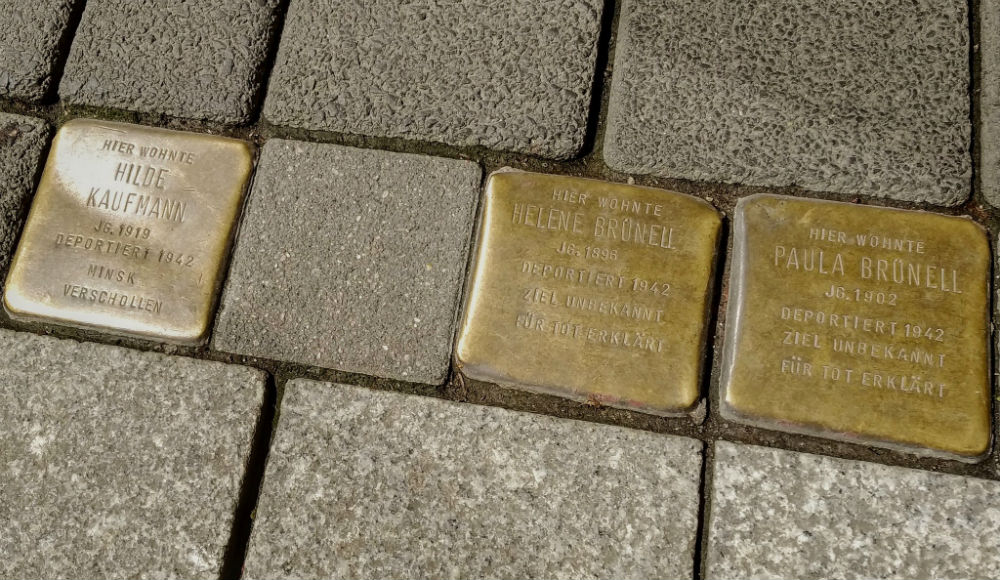Stumbling Stones Uhlstraße 14
These small, brass memorial plaques (Stolpersteine or stumbling stones) commemorate:
* Hilde Kaufmann, born 1919, deported 1942 Minsk, lost, presumed dead.
* Helene Brünell, born 1896, deported 1942, destination unknown, declared dead.
* Paula Brünell, born 1902, deported 1942, destination unknown, declared dead.
Helene and Paula Brünell were sisters who grew up with two brothers. After their father died, the sisters and their mother built a modest textile shop (Kaufhaus Brünell). Hilde Kaufmann was the domestic staff of the businesswomen. The brothers left Germany, but the Helene and Paula stayed with their ailing mother even after the November 1938 Reichs pogromnacht. Their mother was buried with their father in the Jewish cemetery.
The sisters and their housekeeper were forced to move with 13 others into the Jewish house on Kempishofstraße. On 19 July 1942, they were handed over to the Gestapo in Köln, about 20km to the north of Brühl. According to the German Federal Archives, all three women were deported on 20 July 1942 from Köln to Minsk and were murdered in the extermination camp, Maly Trostinez, 12 km southeast of Minsk.
A street in Brühl is named for the sisters: Schwestern-Brünell-Weg.
"Stolpersteine" is an art project for Europe by Gunter Demnig to commemorate victims of National Socialism (Nazism). Stolpersteine (stumbling stones) are small, 10x10cm brass plaques placed in the pavement in front of the last voluntary residence of (mostly Jewish) victims who were murdered by the Nazis. Each plaque is engraved with the victim’s name, date of birth, and place (mostly a concentration camp) and date of death. By doing this, Gunter Demnig gives an individual memorial to each victim. One stone, one name, one person. He cites the Talmud: "A human being is forgotten only when his or her name is forgotten."
Do you have more information about this location? Inform us!
Source
Nearby
Point of interest
Monument
Cemetery
- Brühl-Südfriedhof - Brühl
- Mass Grave Soviet Prisoners of War Hürth-Knapsack - Hürth-Knapsack
- German War Graves Hürth-Knapsack - Hürth-Knapsack
Remembrance Stone
- Stumbling Stones Uhlstraße 31-33 - Brühl
- Stumbling Stone Schmittenstraße 128 - Hurth
- Stumbling Stones Hauptstraße 160 - Bornheim





